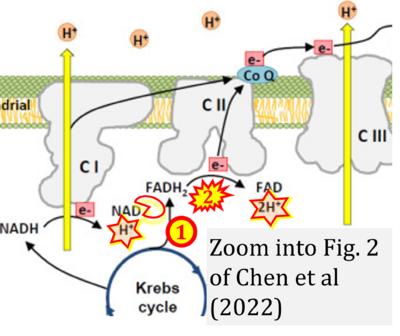Chen 2022 Int J Mol Sci: Difference between revisions
No edit summary |
No edit summary |
||
| Line 1: | Line 1: | ||
{{Publication | {{Publication | ||
|title=Chen TH, Koh KY, Lin KM, Chou CK (2022) Mitochondrial dysfunction as an underlying cause of skeletal muscle disorders. Int J Mol Sci 23:12926. doi | |title=Chen TH, Koh KY, Lin KM, Chou CK (2022) Mitochondrial dysfunction as an underlying cause of skeletal muscle disorders. Int J Mol Sci 23:12926. https://doi.org/10.3390/ijms232112926 | ||
|info=[https://pubmed.ncbi.nlm.nih.gov/36361713/ PMID: 36361713 Open Access] | |info=[https://pubmed.ncbi.nlm.nih.gov/36361713/ PMID: 36361713 Open Access] | ||
|authors=Chen TH, Koh KY, Lin KM, Chou CK | |authors=Chen TH, Koh KY, Lin KM, Chou CK | ||
Revision as of 07:26, 24 April 2023
| Chen TH, Koh KY, Lin KM, Chou CK (2022) Mitochondrial dysfunction as an underlying cause of skeletal muscle disorders. Int J Mol Sci 23:12926. https://doi.org/10.3390/ijms232112926 |
Chen TH, Koh KY, Lin KM, Chou CK (2022) Int J Mol Sci
Abstract: Mitochondria are an important energy source in skeletal muscle. A main function of mitochondria is the generation of ATP for energy through oxidative phosphorylation (OXPHOS). Mitochondrial defects or abnormalities can lead to muscle disease or multisystem disease. Mitochondrial dysfunction can be caused by defective mitochondrial OXPHOS, mtDNA mutations, Ca2+ imbalances, mitochondrial-related proteins, mitochondrial chaperone proteins, and ultrastructural defects. In addition, an imbalance between mitochondrial fusion and fission, lysosomal dysfunction due to insufficient biosynthesis, and/or defects in mitophagy can result in mitochondrial damage. In this review, we explore the association between impaired mitochondrial function and skeletal muscle disorders. Furthermore, we emphasize the need for more research to determine the specific clinical benefits of mitochondrial therapy in the treatment of skeletal muscle disorders.
• Bioblast editor: Gnaiger E
Correction: FADH2 and Complex II
- FADH2 is shown as the substrate feeding electrons into Complex II (CII). This is wrong and requires correction - for details see Gnaiger (2024).
- Gnaiger E (2024) Complex II ambiguities ― FADH2 in the electron transfer system. J Biol Chem 300:105470. https://doi.org/10.1016/j.jbc.2023.105470 - »Bioblast link«
Labels:
Enzyme: Complex II;succinate dehydrogenase


